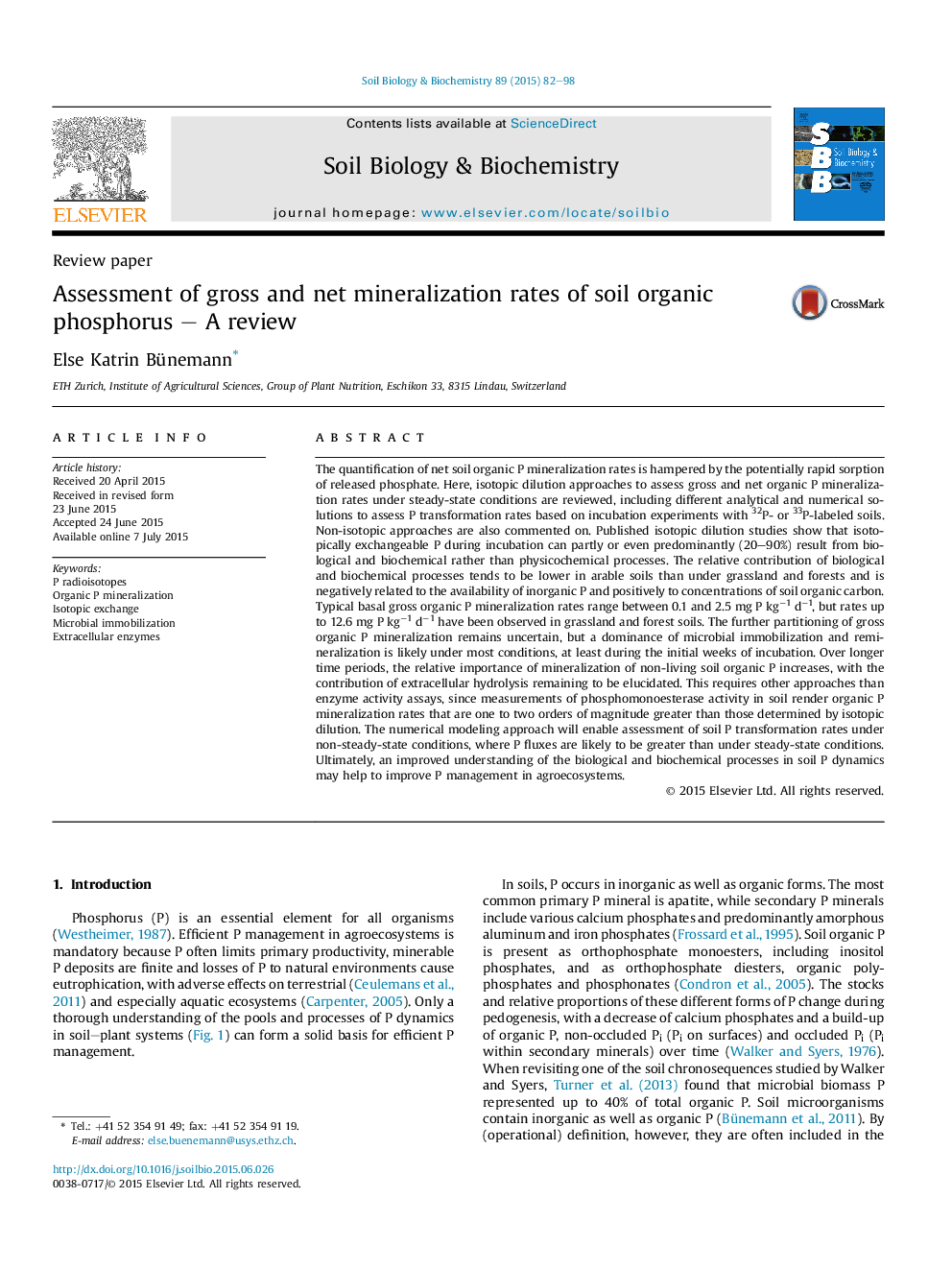| کد مقاله | کد نشریه | سال انتشار | مقاله انگلیسی | نسخه تمام متن |
|---|---|---|---|---|
| 2024457 | 1542595 | 2015 | 17 صفحه PDF | دانلود رایگان |
• Gross and net organic P mineralization rates can be assessed by isotopic dilution.
• Typical basal gross organic P mineralization rates are 0.1–2.5 mg P kg−1 d−1.
• Rates of up to 12.6 mg P kg−1 d−1 have been found in grassland and forest soils.
• Gross rates are mainly attributed to microbial immobilization and remineralization.
• Numerical modeling will allow experiments under non-steady state conditions.
The quantification of net soil organic P mineralization rates is hampered by the potentially rapid sorption of released phosphate. Here, isotopic dilution approaches to assess gross and net organic P mineralization rates under steady-state conditions are reviewed, including different analytical and numerical solutions to assess P transformation rates based on incubation experiments with 32P- or 33P-labeled soils. Non-isotopic approaches are also commented on. Published isotopic dilution studies show that isotopically exchangeable P during incubation can partly or even predominantly (20–90%) result from biological and biochemical rather than physicochemical processes. The relative contribution of biological and biochemical processes tends to be lower in arable soils than under grassland and forests and is negatively related to the availability of inorganic P and positively to concentrations of soil organic carbon. Typical basal gross organic P mineralization rates range between 0.1 and 2.5 mg P kg−1 d−1, but rates up to 12.6 mg P kg−1 d−1 have been observed in grassland and forest soils. The further partitioning of gross organic P mineralization remains uncertain, but a dominance of microbial immobilization and remineralization is likely under most conditions, at least during the initial weeks of incubation. Over longer time periods, the relative importance of mineralization of non-living soil organic P increases, with the contribution of extracellular hydrolysis remaining to be elucidated. This requires other approaches than enzyme activity assays, since measurements of phosphomonoesterase activity in soil render organic P mineralization rates that are one to two orders of magnitude greater than those determined by isotopic dilution. The numerical modeling approach will enable assessment of soil P transformation rates under non-steady-state conditions, where P fluxes are likely to be greater than under steady-state conditions. Ultimately, an improved understanding of the biological and biochemical processes in soil P dynamics may help to improve P management in agroecosystems.
Figure optionsDownload as PowerPoint slide
Journal: Soil Biology and Biochemistry - Volume 89, October 2015, Pages 82–98
